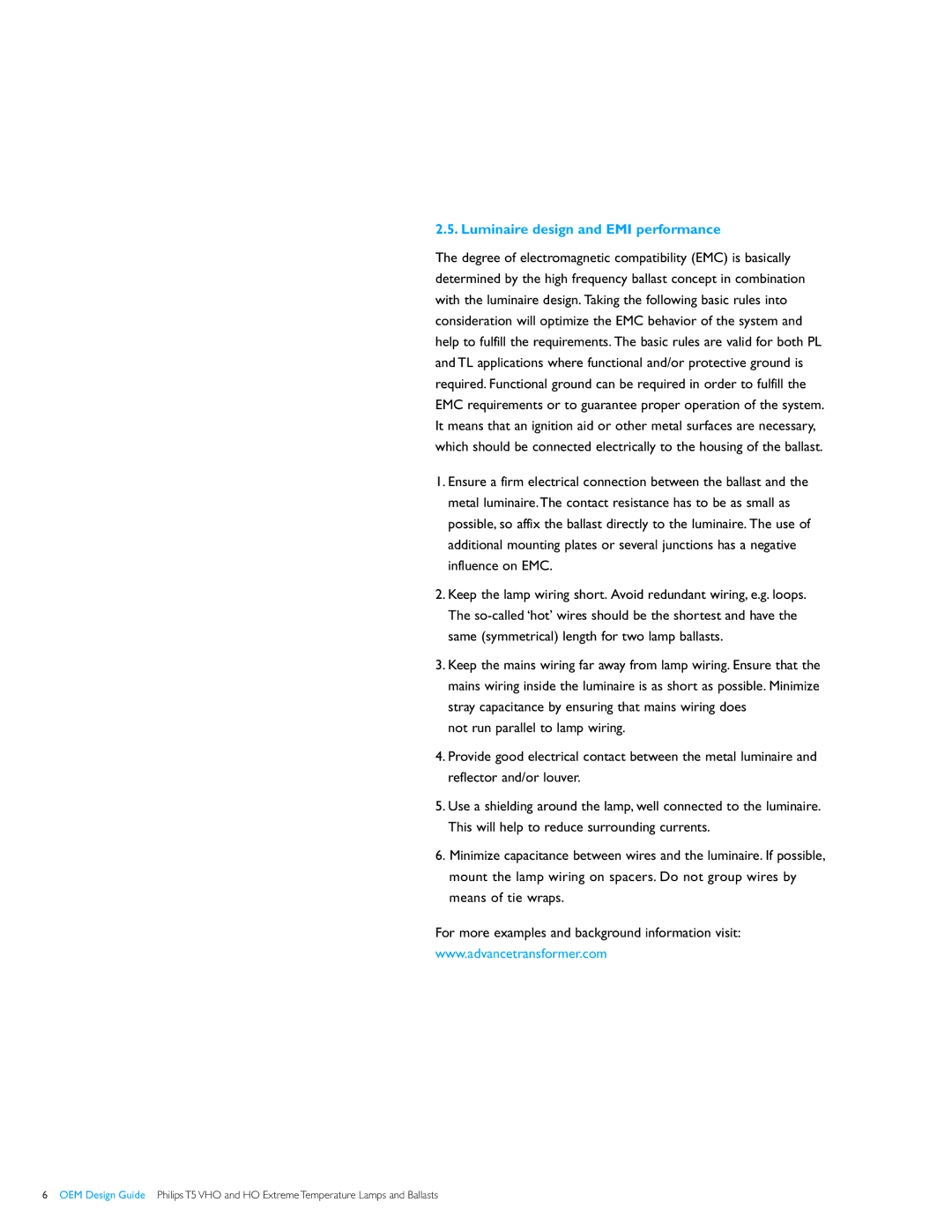2.5. Luminaire design and EMI performance
The degree of electromagnetic compatibility (EMC) is basically determined by the high frequency ballast concept in combination with the luminaire design. Taking the following basic rules into consideration will optimize the EMC behavior of the system and help to fulfill the requirements. The basic rules are valid for both PL and TL applications where functional and/or protective ground is required. Functional ground can be required in order to fulfill the EMC requirements or to guarantee proper operation of the system. It means that an ignition aid or other metal surfaces are necessary, which should be connected electrically to the housing of the ballast.
1.Ensure a firm electrical connection between the ballast and the metal luminaire.The contact resistance has to be as small as possible, so affix the ballast directly to the luminaire. The use of additional mounting plates or several junctions has a negative influence on EMC.
2.Keep the lamp wiring short. Avoid redundant wiring, e.g. loops. The
3.Keep the mains wiring far away from lamp wiring. Ensure that the mains wiring inside the luminaire is as short as possible. Minimize stray capacitance by ensuring that mains wiring does
not run parallel to lamp wiring.
4.Provide good electrical contact between the metal luminaire and reflector and/or louver.
5.Use a shielding around the lamp, well connected to the luminaire. This will help to reduce surrounding currents.
6.Minimize capacitance between wires and the luminaire. If possible, mount the lamp wiring on spacers. Do not group wires by means of tie wraps.
For more examples and background information visit: www.advancetransformer.com
6 OEM Design Guide Philips T5 VHO and HO Extreme Temperature Lamps and Ballasts
